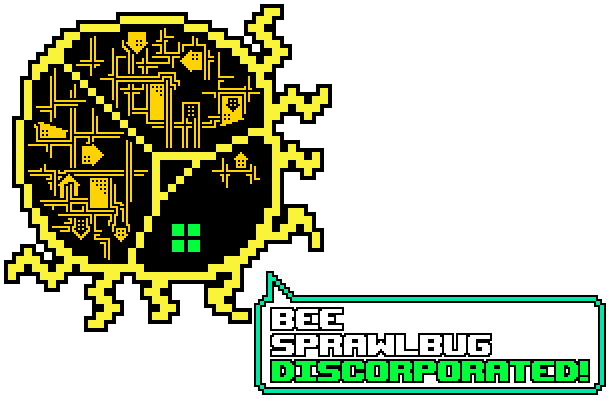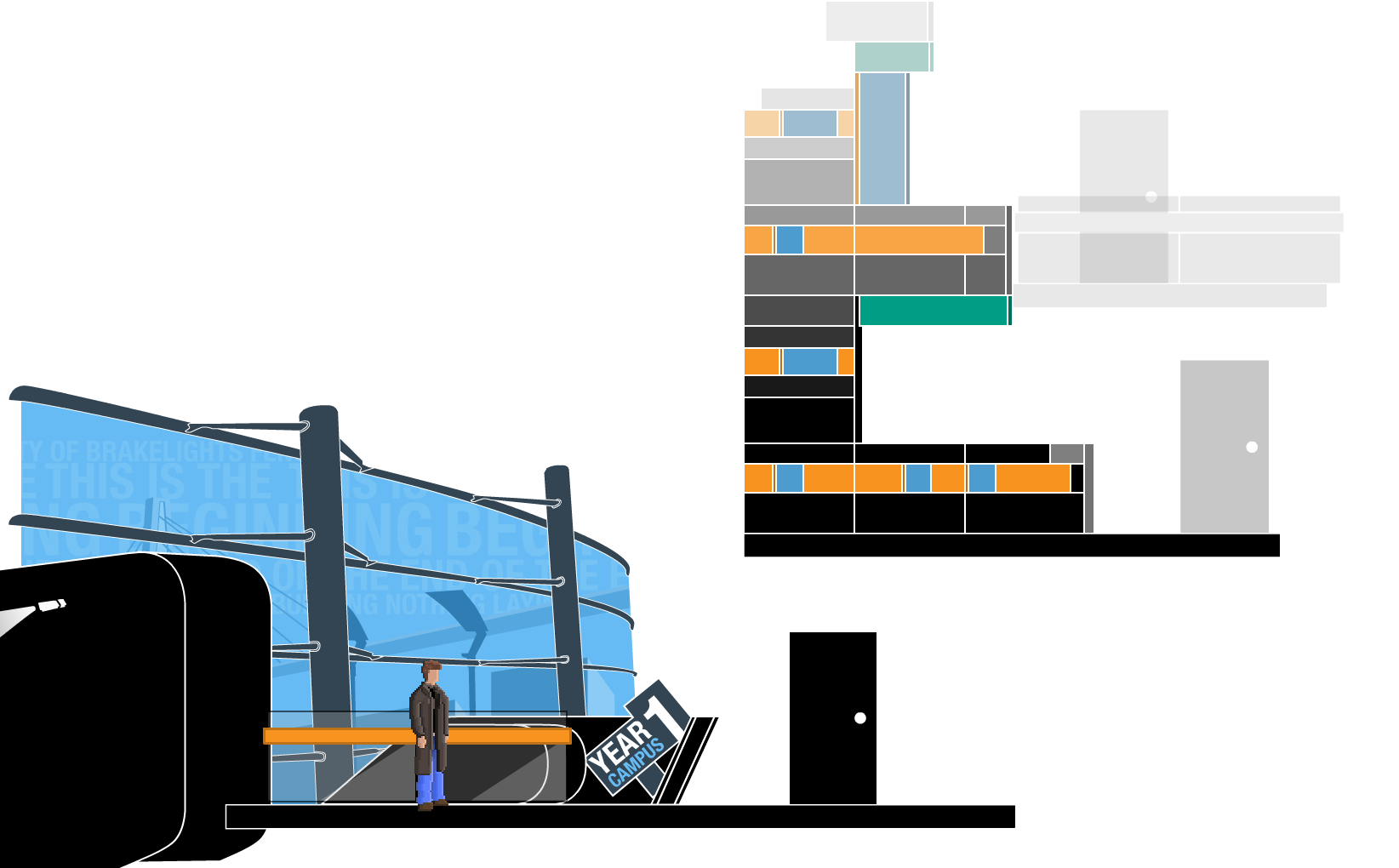Problem Attic is a game by Liz Ryerson that you can read about and play (for free!) on her website.
Any designed work can be decomposed into two different kinds of features: Intrinsic features and extrinsic features. An intrinsic feature is something we judge to be a non-reducible atom of actual value that the audience wants and the work provides—that is, the work’s purpose—while an extrinsic feature is anything that exists solely to realize that purpose, providing no actual value in itself. To design something we must first decide which intrinsic features we hope to provide and then do so as efficiently as possible by devising and iterating on a set of extrinsic ones. Here is a quick example: The intrinsic features of a hammer include ‘delivering impacts to objects’ and ‘inserting/removing nails from rigid structures’, and to best realize these we might iterate on any number of extrinsic ones (such as the hammer’s shape, the materials of which it is composed, or its manufacturing cost).
A product, which is a special kind of designed work, has at least two intrinsic features. One is to perform the task for which it was made; the other is to convince you to buy it. (The next time you hear the phrase ‘ludonarrative dissonance’ ask yourself whether the dissonance you’re discussing might actually stand between ‘what marketing decided would generate money’ and ‘what the designers defiantly attempted to produce’.)
Iterations on a design’s intrinsic features are transformative; they change what the work is on a fundamental level by changing what it does. (A hammer that cannot deliver impacts to objects is no longer, ontologically speaking, a hammer; it has become something else.) Iterations on a design’s extrinsic features are merely ameliorative; they make it better at fulfilling its purpose without changing its nature. Thus we only value extrinsic features insofar as they improve a design’s ability to give us the things we actually want, and we are quite content to discard them as soon as we find more effective ones. Walmart would stop selling hammers if they could figure out how to to market telekinesis. Google would stop making iPhone apps if they could perfect the horrifying spider drones that burrow into your brain through your nasal cavity and telepathically communicate bus directions to you.
The intrinsic features of Art media like literature or film, unlike those of hammers and map APIs, are not easily reducible into language. Whereas to design a hammer involves finding ways of realizing features whose value is readily apparent, to make Art is to search for value lying beyond the edges of our understanding: To capture something we know is important to us even though we cannot quite say why. This is what makes ‘Art’ so famously difficult to define, and why we speak not about ‘novel designers’ or ‘film designers’ but about the authors of these works. Authors are a specialized type of designer who work to realize feelings, concepts or moments; often they attempt to connect in some fashion with our shared humanity. We cannot fully express what their work is for because its value transcends understanding. Thus while conventional design undoubtedly remains useful as a means of iterating towards our authorial objectives (the language by which we communicate mood during a film, for example, is the product of very sophisticated design work) it tells us nothing about what our authorial objectives should actually be nor what our Art becomes when we realize them.
Videogames inherit a little from Art but mostly from product design, which has been kind of a problem for us. As an industry we put faith in the idea that there is intrinsic value in the games we develop, although we don’t think very expansively about what that could be; instead we abstract it, using ugly words like “content” as placeholders for value without ever proving that it truly exists. We then set about designing incredible machines that shuttle players towards these placeholders with extremely high efficiency, which as designers is really what we’re good at. We make the interface as usable as we can because players need it in order to learn the rules. We teach the rules very carefully because players need them in order to grok the dynamics. We shape our dynamics strategically because enacting them is what will stimulate players to feel the aesthetics. Somewhere at the core of all this, we suppose, lives the “content” players are attempting to access: That which we have abstracted away so that we could hurry towards doing safe, understandable product design rather than risky, unfathomable Art. In game design we enjoy paying lip service to aesthetics. What, then, shall we say are the aesthetics that we can package up into 5–60 hours of intrinsic value? Challenge? Agency? Story? Fun? Is ‘Mario’ an aesthetic? How do we stimulate the Mario part of the brain? Oh hey, wait, look over there! Someone is confused about what that UI indicator represents! TO THE DONALD NORMAN MOBILE.
The more time I spend examining my professional work and that of my peers in the games industry, the more I come to believe our near-sightedness has crippled us. We have avoided building sophisticated pleasures that demand and reward the player’s investment, preferring instead to construct concentric layers of impeccably-designed sound and fury over an empty foundation of which we are afraid and at which we can hardly bear to look. We gamify our games, and then we gamify the gamifications, so that many different channels of information can remain open all at once, distracting the player by scattering her attention across a thousand extrinsic reward systems that are, in themselves, of no value whatsoever. We delay the realization that our true goal is not to deliver some fragment of intrinsically valuable “content” rumoured to reside, like a mythical unicorn, in the furthest reaches of our product; our true goal is instead to find something, anything to mete out over the course of 5–60 hours that will somehow account for the absence of real instrinsic value. It is not, therefore, the content that truly matters to us; it is the meting out.
Though the products we design ought to provide value for players and money for us, they currently only pretend towards the former function while actually performing solely the latter one. This deception permits us to continue making intrinsically simple products, avoiding transformative changes to our designs that we fear would render them less digestible; we instead rely upon a pattern of amelioration by technical advancement wherein we deliver as few intrinsic features as possible (and the same ones over and over again), but with intricate fashions heaped upon them. We have abandoned game literacy in the process, and as a result we now find ourselves trapped in the business of making increasingly-elaborate pop-up books.







